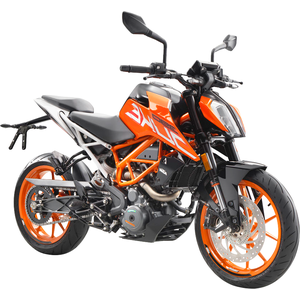KTM 390 Duke (2017–2020): The Corner Rocket That Redefines Lightweight Thrills
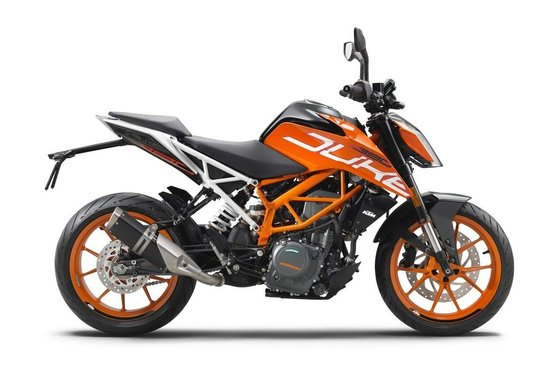
Introduction
The KTM 390 Duke, produced from 2017 to 2020, is a motorcycle that refuses to be pigeonholed. Dubbed the "Corner Rocket" by enthusiasts, it blends the agility of a lightweight naked bike with the technological sophistication of higher-displacement machines. Designed for riders who crave excitement in urban jungles and winding backroads alike, this Austrian marvel is a gateway drug to motorcycling euphoria. Whether you’re a new rider navigating A2 license restrictions or a seasoned veteran looking for a flickable daily rider, the 390 Duke delivers adrenaline by the bucketload. Let’s dissect what makes this bike a modern classic.
Design: Aggression Meets Functionality
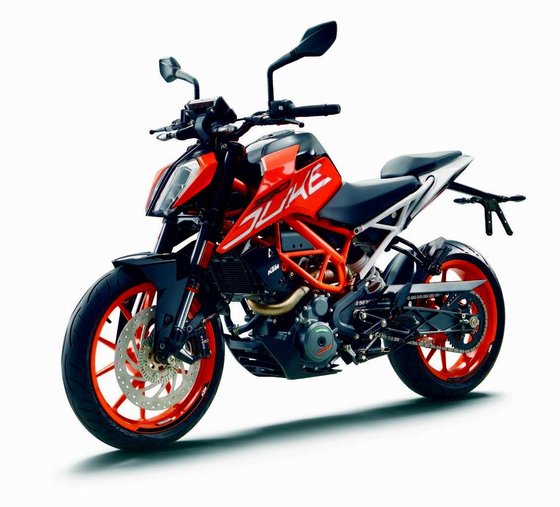
The 390 Duke’s design screams "Ready to Race" from every angle. Borrowing styling cues from its hooligan big brother, the 1290 Super Duke R, it features a predatory LED headlight split by a signature KTM orange stripe. The sharp, minimalist bodywork hides a steel trellis frame that’s both lightweight and rigid, while the side-mounted exhaust (a departure from the older underbelly design) adds a touch of industrial chic.
Color options like black/orange and white/black emphasize its youthful, rebellious character. Every detail feels purposeful—the sculpted 13.4-liter steel tank provides excellent knee grip, and the split-seat setup keeps the rear profile tidy. At 149 kg (328 lbs), it’s lighter than most rivals, and that’s evident the moment you throw a leg over.
Engine and Performance: Small Bore, Big Roar
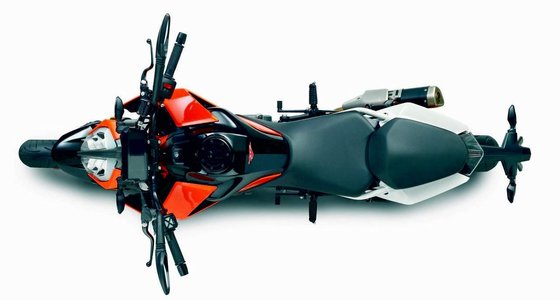
At the heart of the 390 Duke lies a 373.2cc liquid-cooled single-cylinder engine, tuned to produce 44 hp (32 kW) at 9,500 RPM and 35.3 Nm (26 lb-ft) of torque at 7,000 RPM. Don’t let the numbers fool you—this engine is a riot. The ride-by-wire throttle serves up crisp response, while the PASC slipper clutch ensures buttery downshifts and anti-hop antics during aggressive braking.
- Low-End Grunt: Perfect for city traffic, with torque available as early as 3,000 RPM.
- Top-End Scream: The single-cylinder comes alive above 6,000 RPM, pulling hard to its 10,500 RPM redline.
- Euro 4 Compliance: A 3-chamber exhaust keeps emissions in check without muffling the engine’s throaty growl.
The 6-speed transmission is slick, though taller riders might wish for a slightly longer 6th gear on highways. Fuel efficiency hovers around 30–35 km/l (70–82 mpg), making it a frugal companion for daily commutes.
Handling: Dance Like Nobody’s Watching
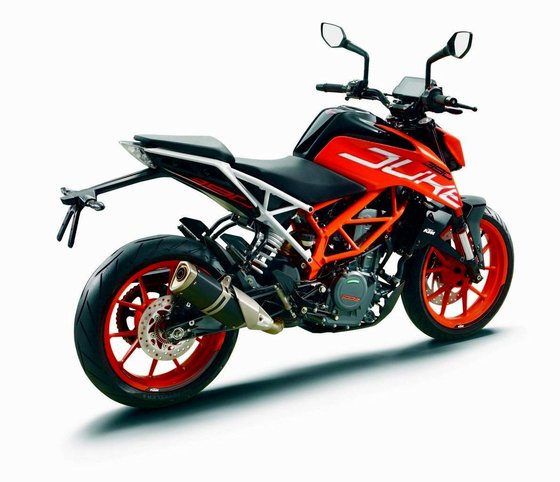
The 390 Duke’s chassis is where engineering brilliance shines. The steel trellis frame, paired with a 43 mm WP USD fork and WP monoshock, strikes a balance between comfort and razor-sharp precision. With a wheelbase of 1,357 mm (53.4"), it’s nimble enough to thread through traffic yet stable at highway speeds.
- Tires: 110/70-17 front and 150/60-17 Metzeler or Michelin rubber offer grip for days.
- Brakes: A 320 mm front disc with a radial 4-piston ByBre caliper (Brembo’s budget brand) delivers stoppies-on-demand performance. Bosch ABS is standard but can be disabled for track days.
- Steering Geometry: A 24° rake and 66° steering angle make it eager to tip into corners.
Riding the 390 Duke feels like piloting a mountain bike with a jet engine. It’s almost too easy to scrape pegs, and the 185 mm (7.3") ground clearance encourages reckless lean angles.
Ergonomics: Comfort Meets Control
The upright riding position strikes a perfect balance between sporty aggression and all-day comfort. The 830 mm (32.7") seat height accommodates shorter riders without cramping taller ones (up to 6'2"). Wide handlebars provide leverage for aggressive steering, while the footpegs are set rearward enough for spirited riding without numbing your knees.
The two-part seat is firm but supportive, though pillions might grumble on rides longer than an hour. Wind protection is minimal—this is a naked bike, after all—but that’s a fair trade for unfiltered sensory engagement.
Technology: Big-Bike Features in a Small Package
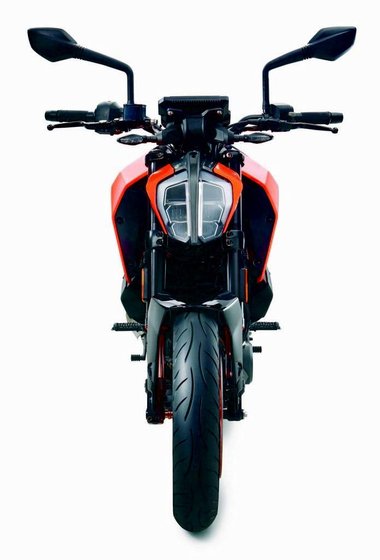
KTM stuffed the 390 Duke with tech that shames pricier competitors:
- TFT Display: A full-color, smartphone-like dash shows gear position, fuel economy, and a rev-counter that shifts from orange (cold) to white (ready to party).
- KTM My Ride: Optional smartphone connectivity lets you manage calls and music via the handlebar menu switch.
- LED Lighting: The headlight’s 20-LED parking strip ensures you’re seen, while the taillight mimics the Super Duke’s minimalist aggression.
The menu system is intuitive, though the lack of cruise control or riding modes (aside from optional ABS disable) keeps things refreshingly simple.
Competition: How Does the Duke Stack Up?
The lightweight naked segment is fiercely contested. Here’s how the 390 Duke battles its rivals:
- Yamaha MT-03 (321cc):
- Pros: Smoother parallel-twin engine, plusher seat.
-
Cons: 36 hp, softer suspension, and dated LCD dash. The Duke out-punches it in power and tech.
-
Honda CB300R (286cc):
- Pros: Neo-retro styling, lighter at 143 kg (315 lbs).
-
Cons: Underpowered (30 hp), fewer premium components.
-
BMW G310R (313cc):
- Pros: Upside-down fork, BMW badge.
- Cons: Bland engine character, higher seat (785 mm), and questionable reliability.
Verdict: The 390 Duke dominates with its horsepower advantage, superior suspension, and tech-forward dashboard. It’s the only bike in its class that feels like a scaled-down superbike.
Maintenance: Keeping the Duke in Fighting Shape
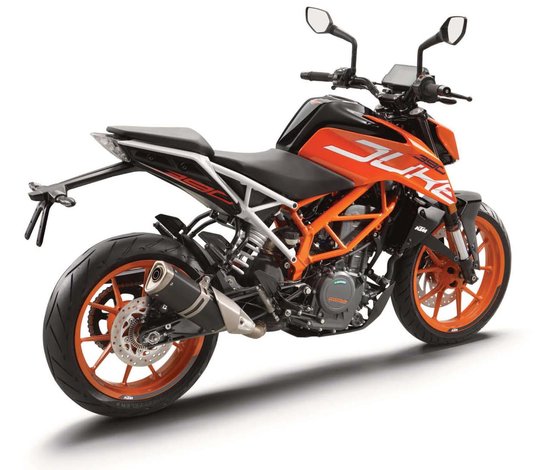
Ownership is relatively hassle-free, but heed these tips:
- Valve Adjustments: Check every 10,000 km (6,200 miles). Intake valves: 0.08–0.12 mm; exhaust: 0.13–0.17 mm.
- Oil Changes: Use 1.7L of 15W-50 (API SH). Skip cheap oils—the Duke’s high-revving engine deserves synthetic.
- Chain Care: The 5/8 x 1/4" X-ring chain needs regular cleaning and lubrication. Adjust slack to 50–60 mm.
- Tire Pressure: 2.0 bar (29 psi) front, 2.2 bar (32 psi) rear for solo rides.
- Coolant: Replace every 2 years with high-quality ethylene glycol.
Common upgrades from MOTOPARTS.store:
- Performance air filters for sharper throttle response.
- Adjustable levers for smaller hands.
- Frame sliders to protect that gorgeous trellis frame.
Conclusion: A Modern Classic for the Bold
The KTM 390 Duke (2017–2020) is a masterclass in balancing fun, function, and affordability. It’s a bike that rewards skill without punishing inexperience, and its DNA is pure KTM—unapologetically wild yet meticulously engineered. Whether you’re carving canyons, dodging traffic, or hunting for aftermarket upgrades, the Duke invites you to push limits. At MOTOPARTS.store, we’re here to help you extract every ounce of potential from this pocket rocket. After all, why ride ordinary when you can #FeelTheOrange?
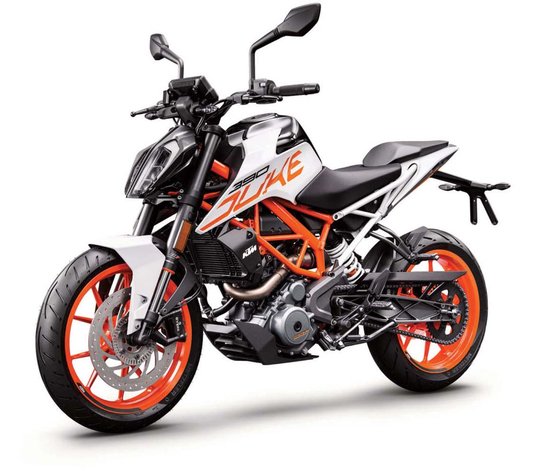


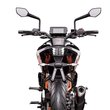
Specifications sheet
| Engine | |
|---|---|
| Stroke: | Four-stroke |
| Ignition: | Bosch EMS |
| Max power: | 32 kW | 43.0 hp |
| Max torque: | 35 Nm |
| Fuel system: | Bosch fuel injection (46 mm throttle body) |
| Lubrication: | Wet sump |
| Max power @: | 9500 rpm |
| Displacement: | 373 ccm |
| Max torque @: | 7000 rpm |
| Configuration: | Single |
| Cooling system: | Liquid |
| Compression ratio: | 12.6:1 |
| Number of cylinders: | 1 |
| Dimensions | |
|---|---|
| Wheelbase: | 1357 mm (53.4 in) |
| Dry weight: | 149 |
| Wet weight: | 163 |
| Seat height: | 830 mm (32.7 in) |
| Ground clearance: | 185 mm (7.3 in) |
| Fuel tank capacity: | 13.4 L (3.5 US gal) |
| Steering head angle: | 66° |
| Drivetrain | |
|---|---|
| Chain type: | 5/8 x 1/4" X-ring |
| Final drive: | chain |
| Transmission: | 6-speed, PASC anti-hopping clutch |
| Rear sprocket: | 45 |
| Front sprocket: | 15 |
| Primary drive ratio: | 30:80 |
| Electronics | |
|---|---|
| ABS: | Bosch 9MB two-channel (disengageable) |
| Dashboard: | Full-color TFT display |
| Headlight: | LED with 20-LED parking light |
| Throttle system: | Ride-by-wire |
| Maintenance | |
|---|---|
| Rear tire: | 150/60-17 |
| Engine oil: | 15W50 |
| Front tire: | 110/70-17 |
| Idle speed: | 1600 ± 50 rpm |
| Brake fluid: | DOT 4 |
| Spark plugs: | NGK LKAR8A-9 |
| Coolant capacity: | 1.1 |
| Forks oil capacity: | 0.88 |
| Engine oil capacity: | 1.7 |
| Engine oil change interval: | Every 5000 km or 2 years |
| Valve clearance (intake, cold): | 0.08–0.12 mm |
| Valve clearance check interval: | 24,000 km (15,000 mi) |
| Valve clearance (exhaust, cold): | 0.13–0.17 mm |
| Recommended tire pressure (rear): | 2.0 bar (29 psi) solo / 2.2 bar (32 psi) with passenger |
| Recommended tire pressure (front): | 2.0 bar (29 psi) |
| Chassis and Suspension | |
|---|---|
| Frame: | Steel trellis frame, powder-coated |
| Rear brakes: | 230 mm disc, 1-piston caliper (Bosch ABS) |
| Front brakes: | 320 mm disc, 4-piston radial caliper (Bosch ABS) |
| Rear suspension: | WP monoshock, adjustable preload |
| Front suspension: | WP inverted telescopic fork, Ø 43 mm |
| Rear wheel travel: | 150 mm (5.9 in) |
| Front wheel travel: | 142 mm (5.6 in) |



